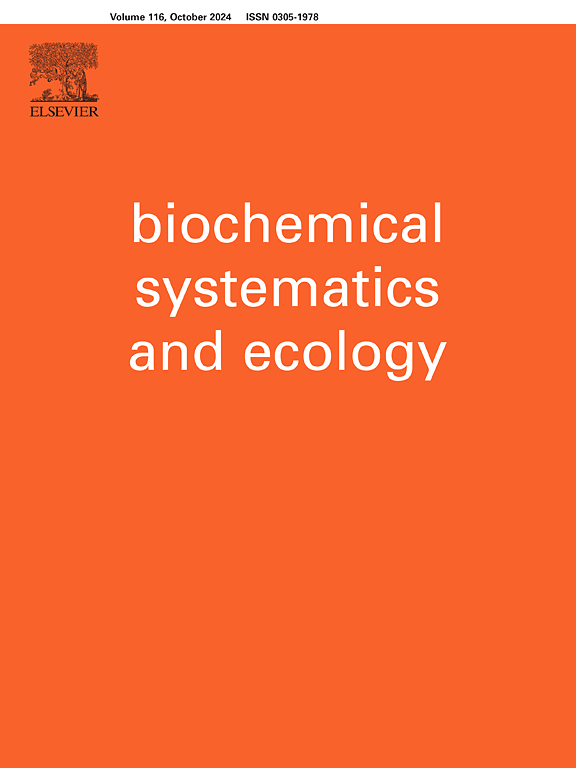Essential oils of Mentha pulegium L.: Chemical biodiversity and bioactivity (in vitro and in silico) influenced by geographic variation
IF 1.4
4区 生物学
Q4 BIOCHEMISTRY & MOLECULAR BIOLOGY
引用次数: 0
Abstract
Pennyroyal mint (Mentha pulegium), a member of the Lamiaceae family, is valued for its therapeutic properties by people around the world. In Morocco, it has long been recognized for its ability to treat a wide range of diseases. The aim of this study was to gain insight into the phytochemical diversity and biological activities of M. pulegium essential oil. To this end, a comparative analysis of samples from three distinct regions (Marrakesh, Rabat, and Tangier) was conducted using in vitro and in silico methods. The application of gas chromatography-mass spectrometry (GC-MS) allowed the identification of 15 components in MPM (99.94 %), 16 components in MPR (98.02 %), and 12 components in MPT (84.62 %). The most abundant constituents in the oils under study were oxygenated monoterpenes. The oils showed a low antiradical efficacy against DPPH and ABTS+ radicals, whereas they differently inhibited α-amylase and α-glucosidase enzymes. The different effects demonstrated were attributable to the different chemical composition of the investigated oils. In silico analyses of three target enzymes confirmed the binding affinities of the identified compounds in the oils, suggesting their synergistic effect. The essential oil also demonstrated potent insecticidal activity. In particular, the essential oil MPR exhibited a lethal dose of 111.51 μL/mL after 5 min of exposure and a lethal exposure time of 7.60 min. These results suggest that the essential oil, being a valuable source of bioactive compounds, can be used for different industrial applications, including in the food sector.

求助全文
约1分钟内获得全文
求助全文
来源期刊

Biochemical Systematics and Ecology
生物-进化生物学
CiteScore
3.00
自引率
12.50%
发文量
147
审稿时长
43 days
期刊介绍:
Biochemical Systematics and Ecology is devoted to the publication of original papers and reviews, both submitted and invited, in two subject areas: I) the application of biochemistry to problems relating to systematic biology of organisms (biochemical systematics); II) the role of biochemistry in interactions between organisms or between an organism and its environment (biochemical ecology).
In the Biochemical Systematics subject area, comparative studies of the distribution of (secondary) metabolites within a wider taxon (e.g. genus or family) are welcome. Comparative studies, encompassing multiple accessions of each of the taxa within their distribution are particularly encouraged. Welcome are also studies combining classical chemosystematic studies (such as comparative HPLC-MS or GC-MS investigations) with (macro-) molecular phylogenetic studies. Studies that involve the comparative use of compounds to help differentiate among species such as adulterants or substitutes that illustrate the applied use of chemosystematics are welcome. In contrast, studies solely employing macromolecular phylogenetic techniques (gene sequences, RAPD studies etc.) will be considered out of scope. Discouraged are manuscripts that report known or new compounds from a single source taxon without addressing a systematic hypothesis. Also considered out of scope are studies using outdated and hard to reproduce macromolecular techniques such as RAPDs in combination with standard chemosystematic techniques such as GC-FID and GC-MS.
 求助内容:
求助内容: 应助结果提醒方式:
应助结果提醒方式:


